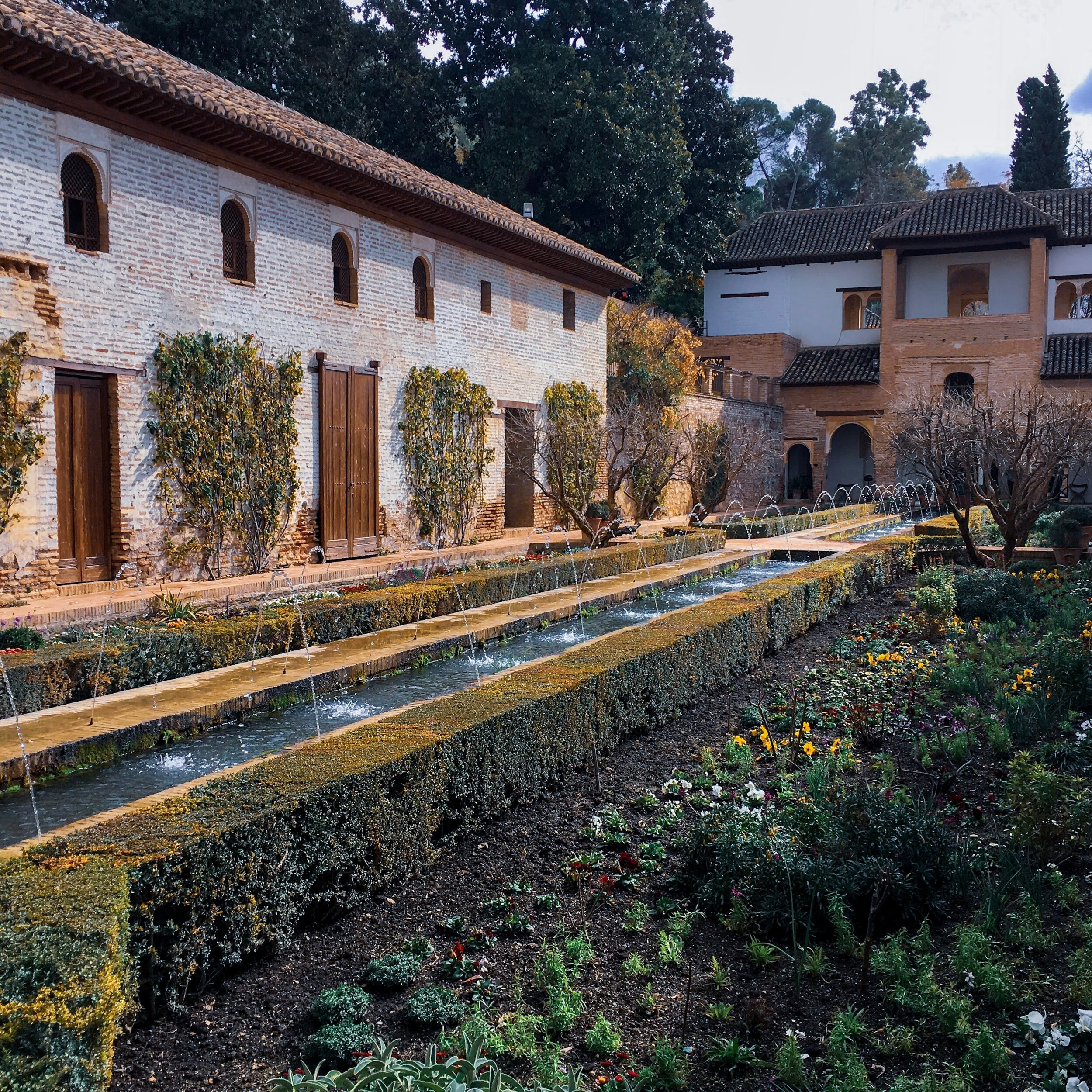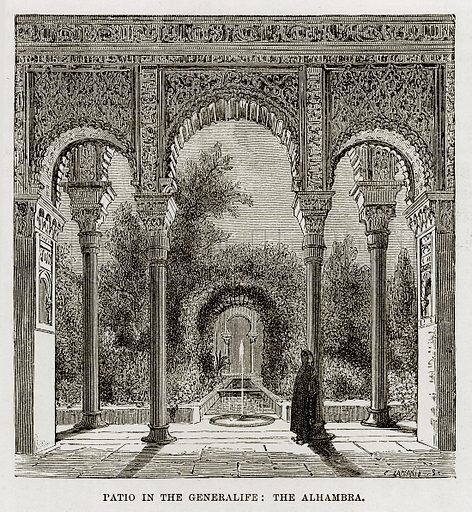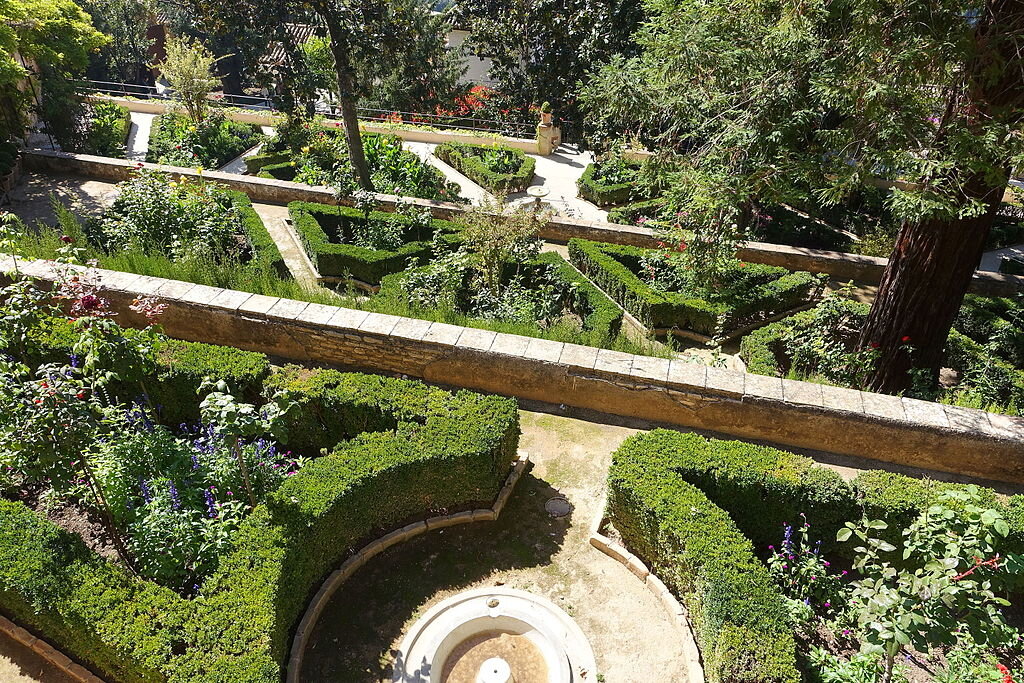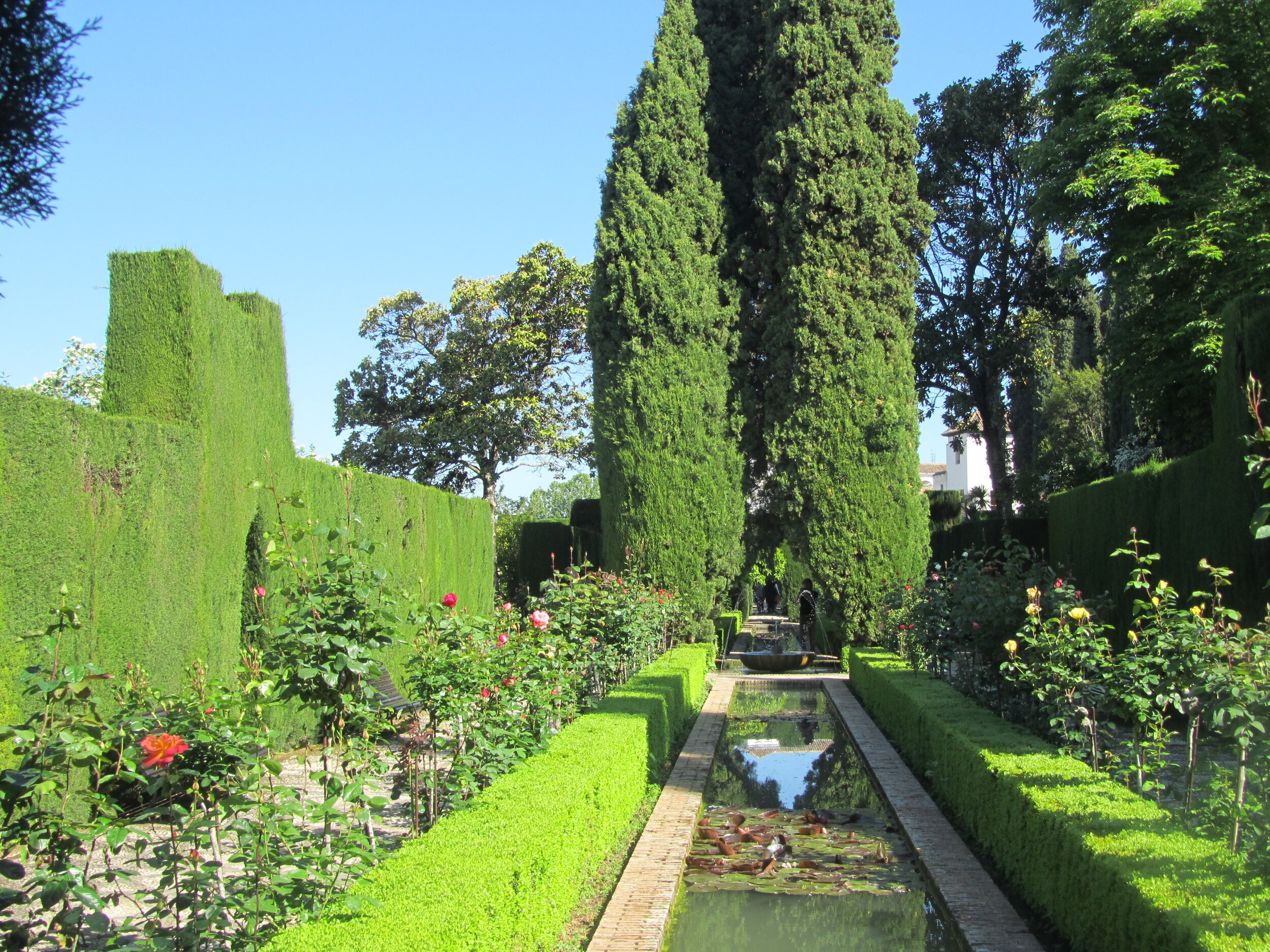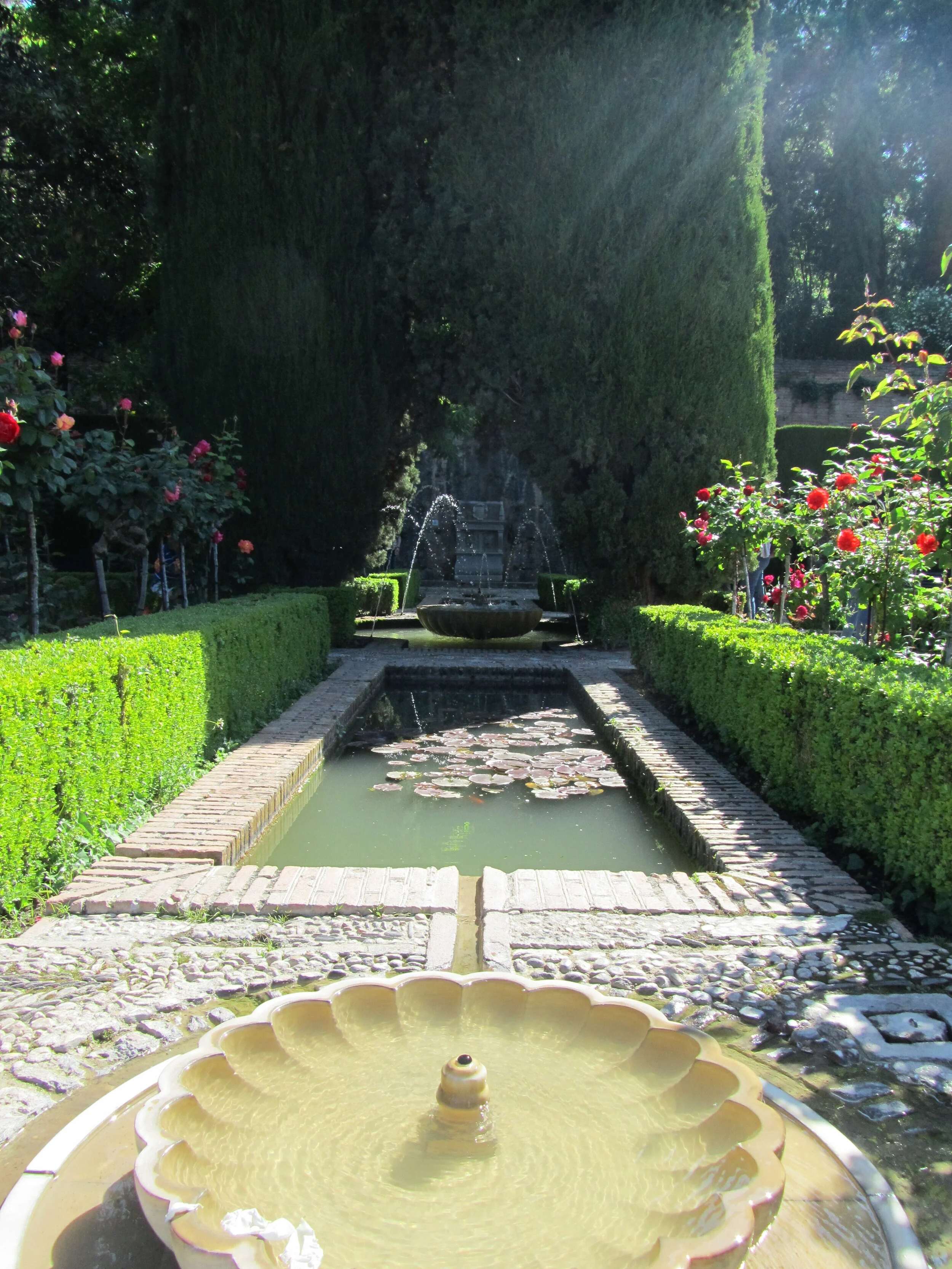The lush 13th-century garden complex offers a calm oasis overlooking Granada.
The Generalife gardens were created as a peaceful refuge for the Nasrid sultans
The Alhambra is one of those once-in-a-lifetime trips. When Wally and I learned that we could easily take a train from Sevilla to Granada, home to the historic medieval Moorish fortress of the Alhambra, we didn’t hesitate to add it to our itinerary.
Duke and Wally love a good garden
Wally and I purchased our skip-the-line tickets for a small-group guided tour months in advance for around 46€. We recommend going this route, but if you decide you don’t want a guide, general admission costs 14€. Wanting to beat the crowds as well as the midday heat, we opted for the earliest time slot, arriving around 9 a.m., shortly after the Alhambra opens.
Be sure to bring your passport as you’ll need to present it at the entrance pavilion. If you’re thinking of trying to purchase tickets the day of, it’s not worth the risk: The number of daily admissions is limited, and sold in three-hour time slots on a first-come, first-served basis, a policy enforced to help preserve the monument.
“Courtyard terraces exude tranquility, where fragrant flowering jasmine, roses, orange trees and myrtles scent the air.
Towering cypress trees form a dense evergreen screen, lining both sides of the garden path.”
Our tour of the Alhambra complex began with an exploration of the 13th-century gardens of the Generalife.
A historic illustration of the garden complex
Paradise on Earth
Part of the Alhambra complex, the Generalife (pronounced Hay-nay-ral-lee-fay) served as a respite from palace life for the Nasrid sultans, the last of the Muslim dynasty that ruled Granada until 1492. It’s also a beautiful oasis for modern-day visitors. The name derives from the Arabic Jannat al-Arif, which typically gets translated to Garden of the Architect, though my research suggests Garden of Knowledge might be more accurate.
The Generalife gardens are terraced, situated on a hill above the city of Granada
Muhammad II, the second sultan of the Nasrid dynasty (who reigned from 1273-1302), commissioned the original estate as a summer palace. His successor, Muhammad III (1302-1309), enlarged and refined the gardens.
The Generalife is set on a slope of the Cerro del Sol hillside, adjacent to but higher in elevation than the al-Sabika Hill, where the Alhambra stands. Its series of gardens were based on the Zoroastrian division of the universe into four parts, rooted in the sacred elements of earth, air, fire and water.
Both the upper and lower gardens have been modified over the years. The present plantings were added by the architect Leopoldo Torres Balbás in 1931 and completed by Francisco Prieto-Moreno in 1951.
Narrow reflecting pools can be found throughout the complex
Water Wonders
The soothing sound of gently gurgling water is ever present at the Generalife — its engineers developed a sophisticated irrigation and hydraulic system by building a dam and aqueduct that diverts water from the River Darro to what would otherwise be a barren hillside.
The highlight of the Generalife is the Court of the Long Pond
This channel or canal, the Acequia Real (Royal Aqueduct), distributed water to the gardens, fountains and baths of the Generalife and the Alhambra, solidifying its identity as a palace city. Water holds many meanings in the Islamic world and was essential in maintaining agriculture and providing drinking water, and was respected as a divine gift.
Arches of roses create picturesque frames of the city of Granada
A Relaxing Respite
Courtyard terraces exude tranquility, where fragrant flowering jasmine, roses, orange trees and myrtles scent the air. Towering cypress trees form a dense evergreen screen, lining both sides of the garden path, which are embellished with smooth pebble mosaic patterns: white stones from the Darro and black ones from the Genil River.
The amazingly intricate stonework is just a taste of what’s to come in the rest of the Alhambra complex
Try not to get lost in the hedge maze!
Wally and I climbed a flight of steps and ascended from the lower garden terrace to the semi-enclosed Patio de la Acequia, also known as the Court of the Long Pond. Jets of water, installed in the 19th century, arch over the center of the rectangular pool. The courtyard was originally divided into four quarters like the Court of the Lions inside the Alhambra. A pair of porticoed pavilions with overlapping glazed roof tiles stand at the north and south ends. The narrow open arcade along the south side was added in 1670 after the Reconquista, when Christians defeated the Islamic rulers of the Iberian Peninsula.
The pleasant gurgling of fountains floats through the air
A pleasure for the senses, the Generalife is a great way to start or end your exploration of the Alhambra, pause for a while and take in the atmosphere. We lingered in the gardens for about 45 minutes before marveling at the wonders of the nearby palaces. –Duke

